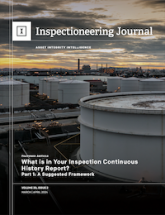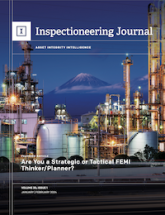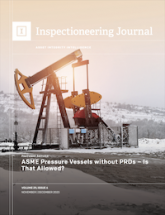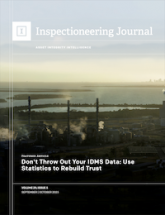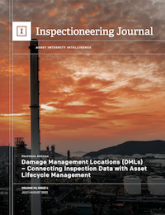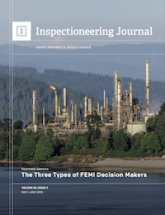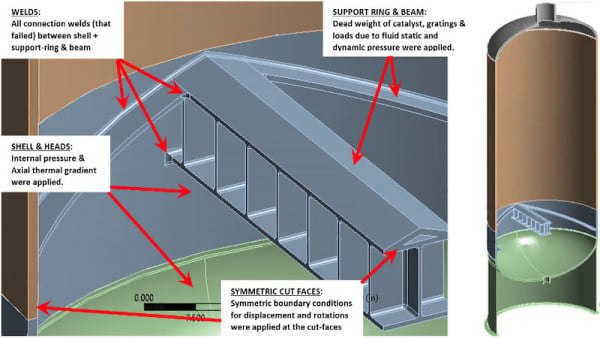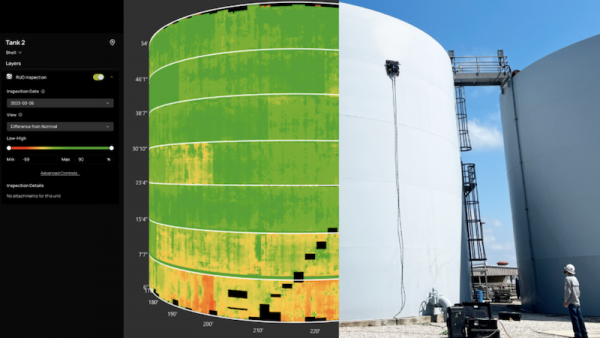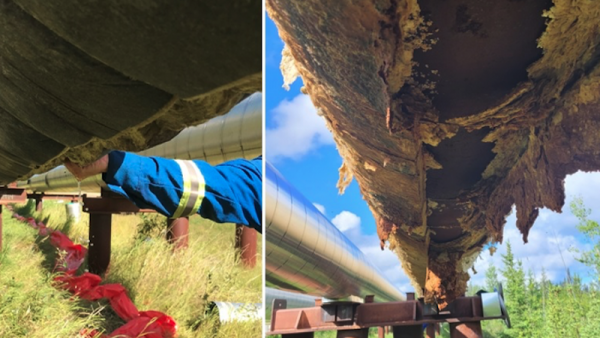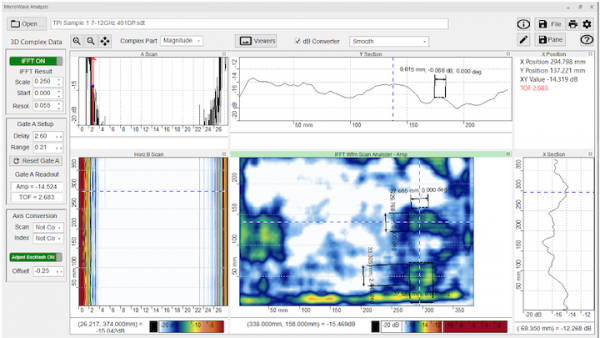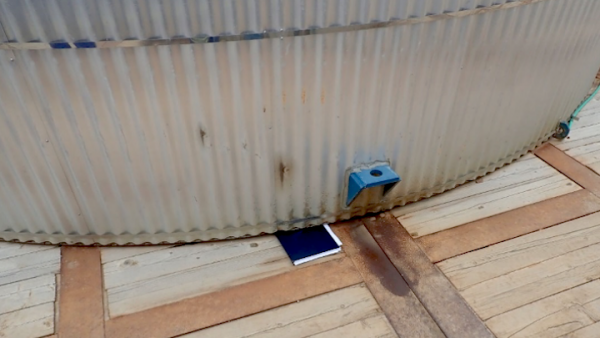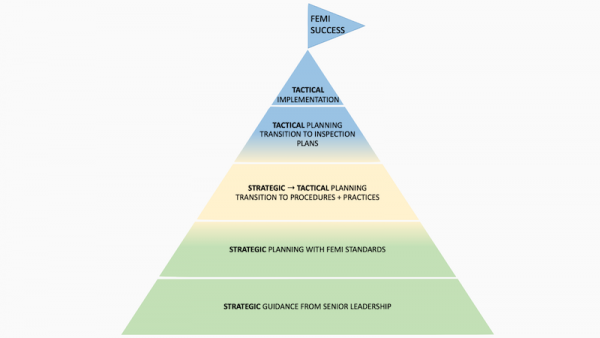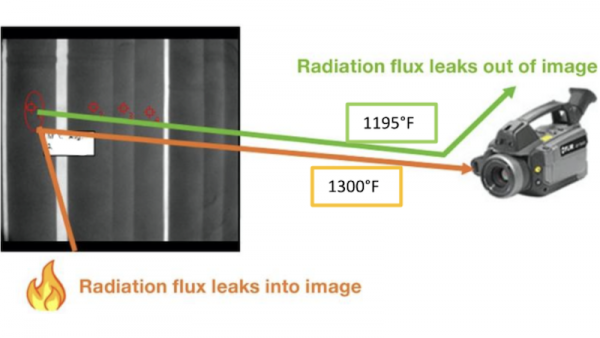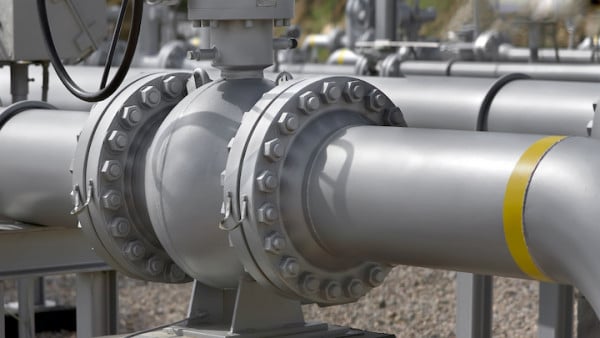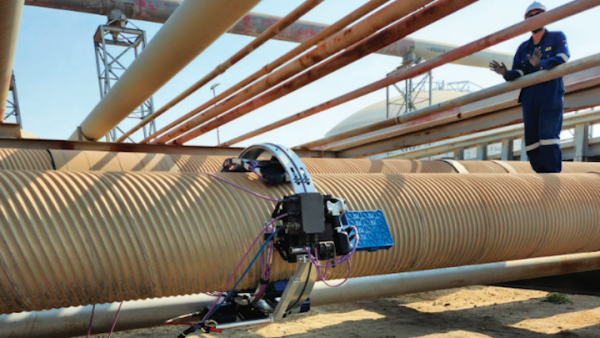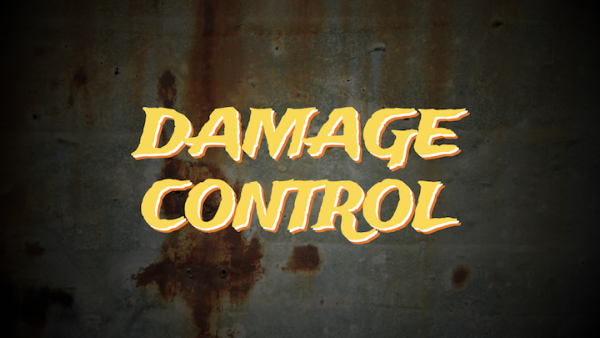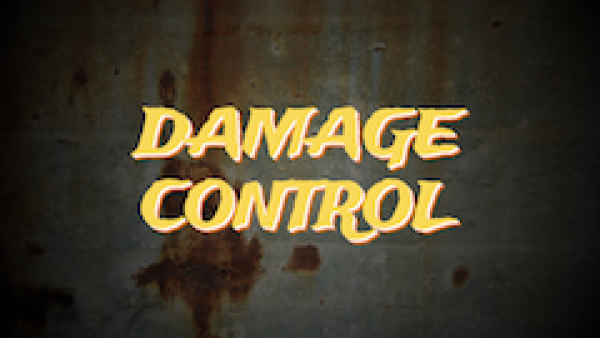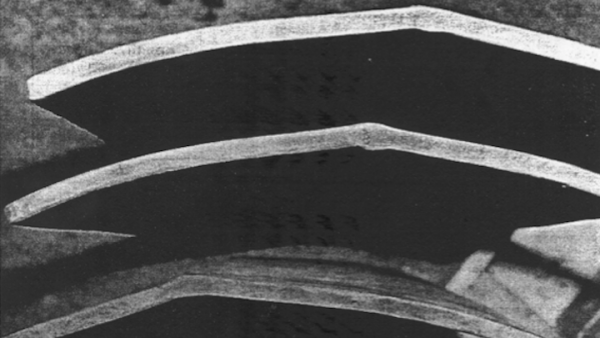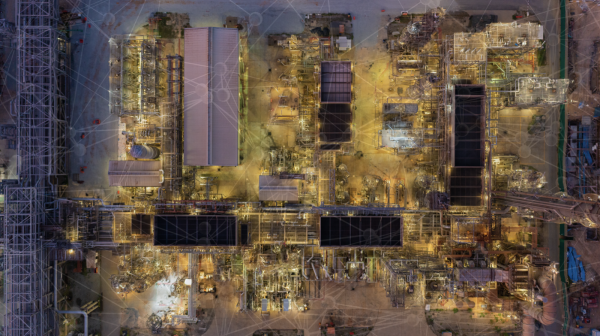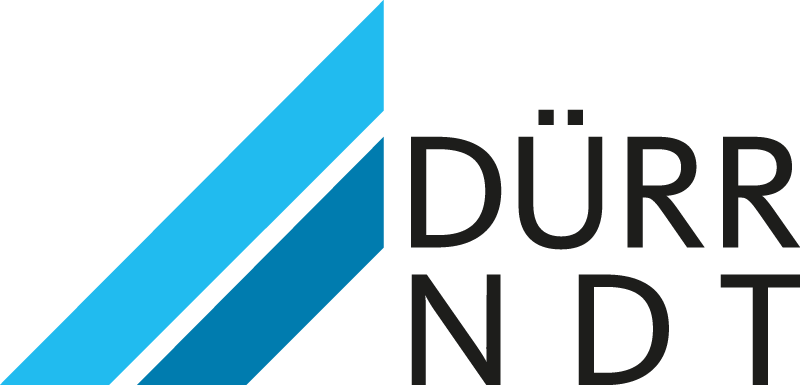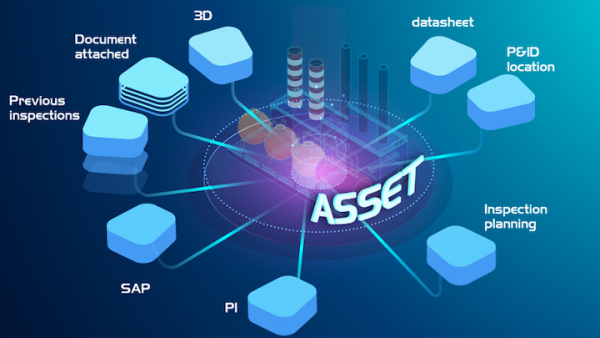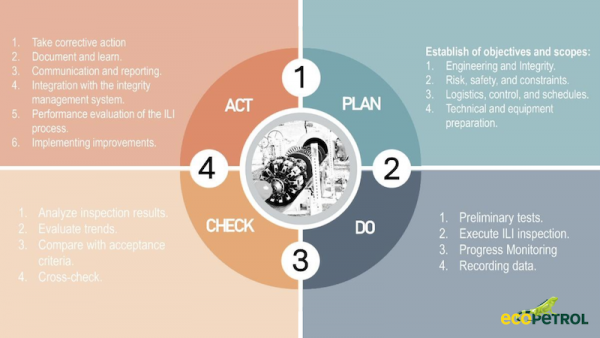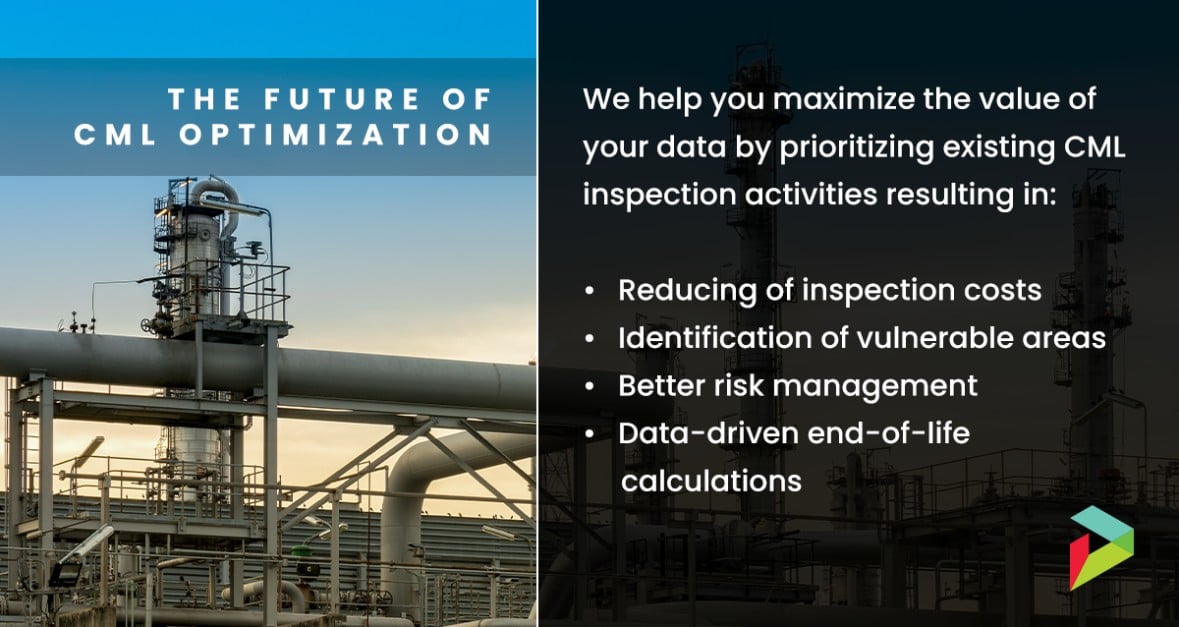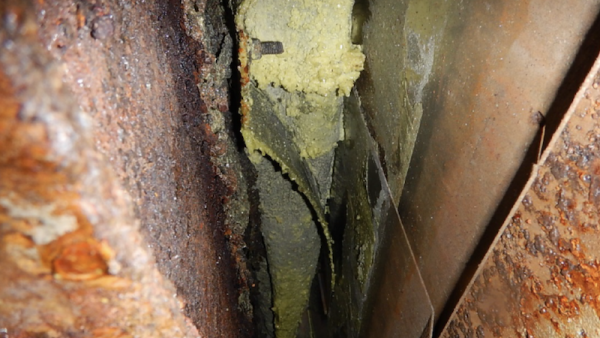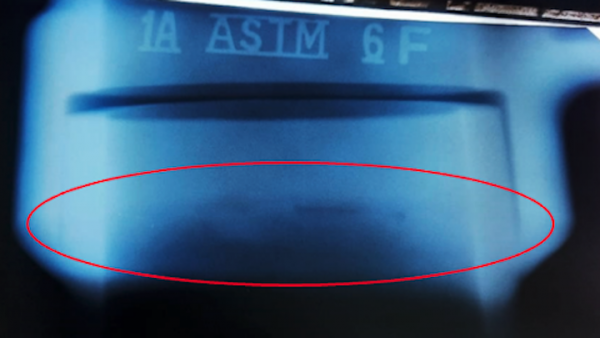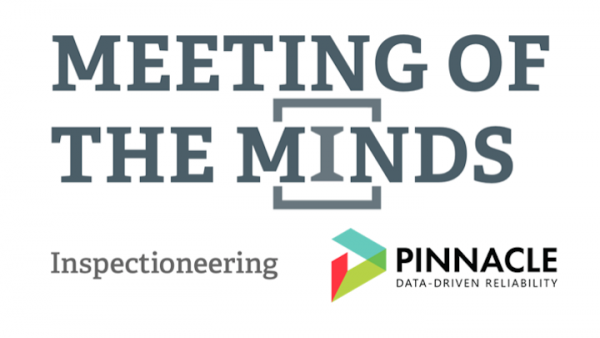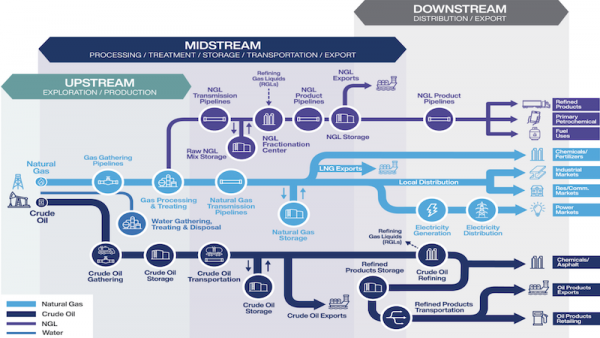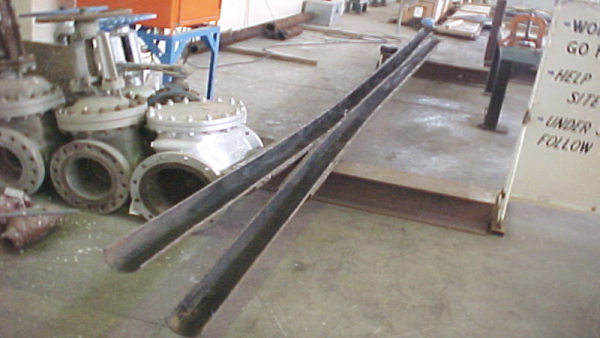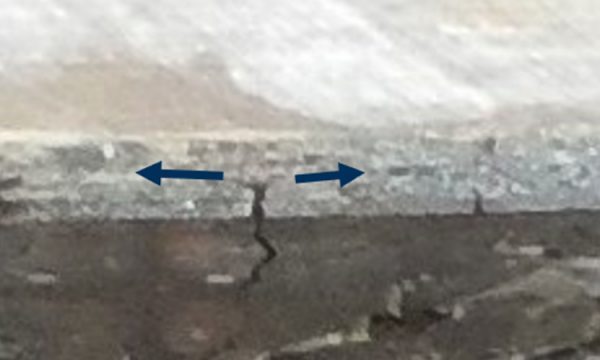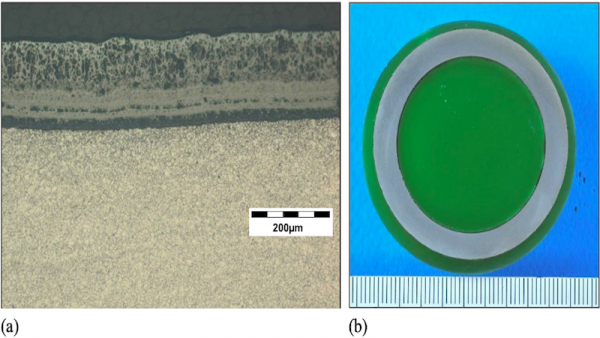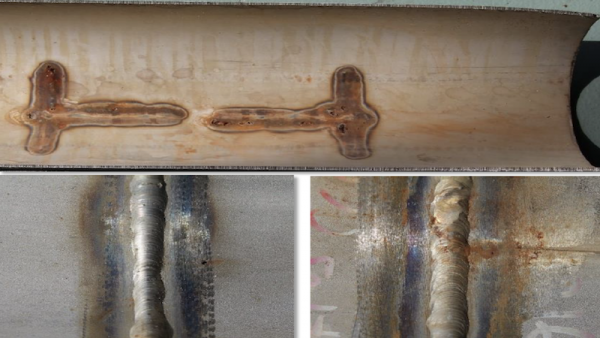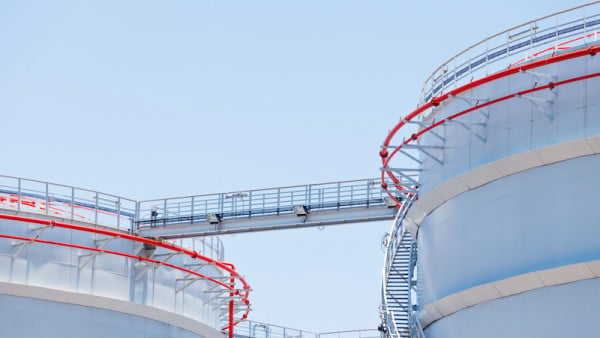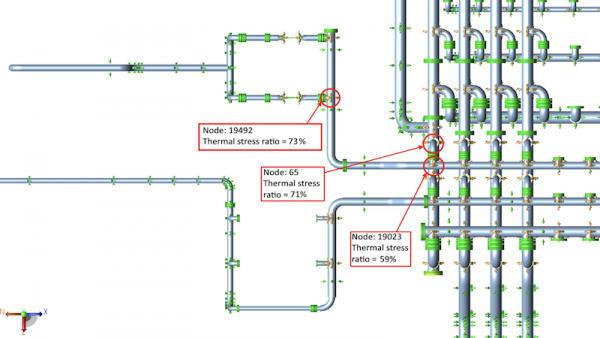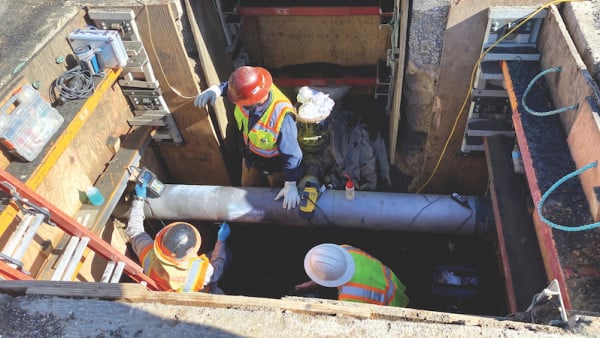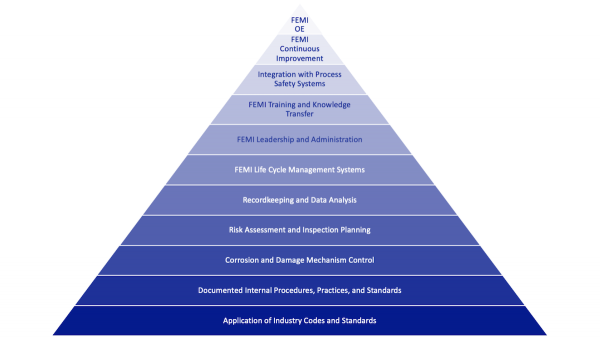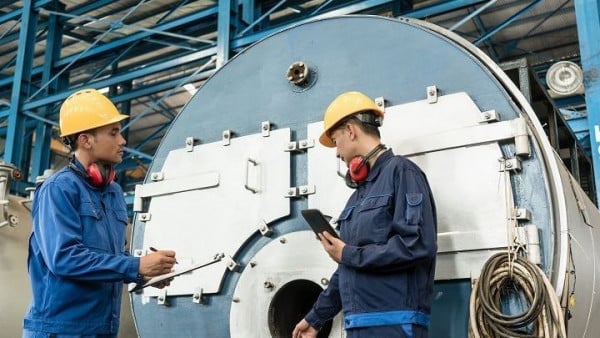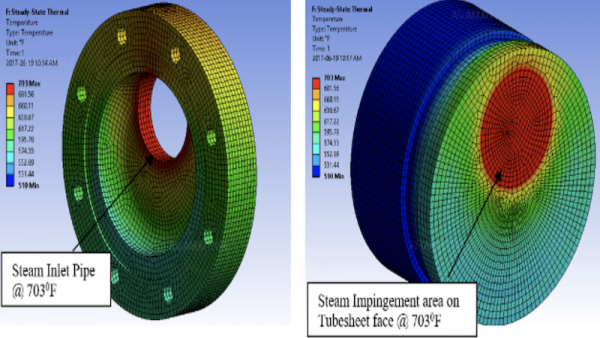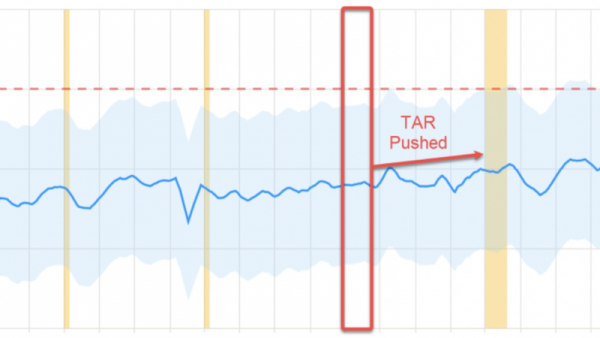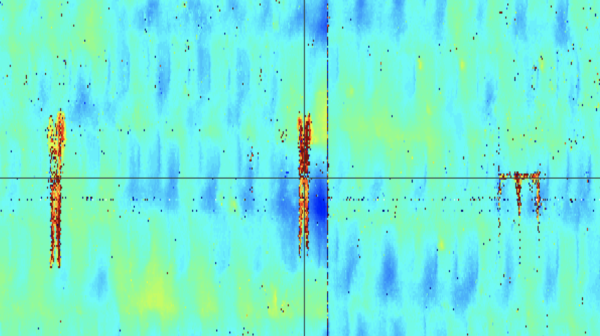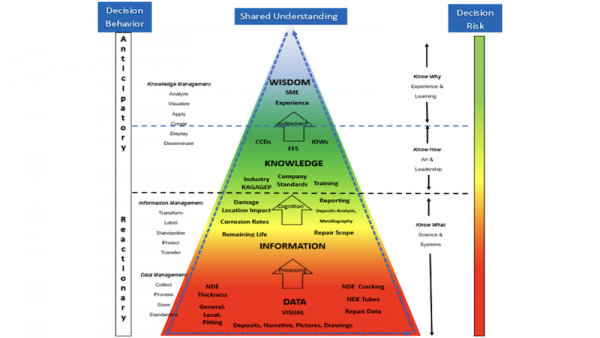Damage Control: Metallurgical Embrittlement Detection
FFS Forum: Piping Analysis Software as a Tool in Fitness-for-Service Assessments
Investigation Tactics for Prevention of Floating Roof Rim Seal Failures
Midstream Engineering Practices: Similarities and Differences to Downstream Engineering Practices
What is in Your Inspection Continuous History Report? - Part 1: A Suggested Framework
Are You a Strategic or Tactical FEMI Thinker/Planner?
Art to Science: Changing Infrared 180 Degrees
Damage Control: Brittle Fracture Mitigation
FFS Forum: Understanding Part 8 Assessment of Weld Misalignment and Shell Out-of-Round
New Software, NDE, and MI Program Sustainability
Oxide Scale Approach in Metal Temperature Estimation for Boiler Tubes in Creep Service
Tubesheet Gasket Failures of Hairpin Heat Exchanger Units in NGL Plants
A Four-Step Approach to Achieving Digital Transformation
ASME Pressure Vessels Without PRDs – Is That Allowed?
Damage Control: Brittle Fracture Assessment
FFS Forum: Miner’s Rule – A Primer on Linear Damage Accumulation
How Digital Technology Enhances Reliability Centered Maintenance
Implementation of a PDCA Process for In-Line Inspection of Pipelines
Using Data to Drive Your Turnaround Planning Strategy
A Fitness-for-Service Assessment of Thermal Dehydrators in NGL Plants – Fatigue Life Extension
A Hybrid Approach for Effective CUI Management
Damage Control: Brittle Fracture Detection
Don’t Throw Out Your IDMS Data: Use Statistics to Rebuild Trust
FFS Forum: Crack-like Flaw Categorization Rules
Improving Pipeline Integrity with Artificial Intelligence
Linking IOWs to RBI – Staying Evergreen
NDE Methods for Detecting In-Service FRP Damage
Solving the Mechanical Integrity and Reliability Program Sustainability Puzzle
Texas Storage Tank Owners Be Advised: SB 900 is Now in Effect
A Data-Driven Approach to Sustaining and Improving Your Mechanical Integrity Program
Automated Radiographic Testing: High-Speed Corrosion Mapping Using Robotic Crawlers
Damage Control: Sulfidation and High-Temperature H2/H2S Corrosion Mitigation
Damage Management Locations (DMLs) – Connecting Inspection Data with Asset Lifecycle Management
FFS Forum: The New API 579 Part 15, Piping Vibration – Interview with Lyle Breaux, Team Lead
Leveraging RBI and Corrosion Management Programs
MI Capability and Competency Development
The Ten Foundational Management Systems Needed to Achieve FEMI Operational Excellence
Advanced Microwave Inspection: Evolution of the Method
API 579 FFS Assessments of Storage Tanks with Uneven Support
ASME PCC-1: The Change from a Bolting Guideline to a Bolting Standard
Damage Control: Sulfidation and High-Temperature H2/H2S Corrosion Assessment
FFS Forum: Old Vessels vs New NDE
Lack of Fusion on Socket Weld Joints – A Case Study
The Three Types of FEMI Decision-Makers - Which One Are You?
Article Index
This article features a discussion of three of the key elements to sustain and improve your mechanical integrity program successfully.
Failure of internal attachment welds became a chronic issue for an NGL plant. Identifying design discrepancies was key to eliminating repeated failures.
This article outlines a 4-step strategy for digital transformation in operations, aiming to enhance efficiency and maintenance practices.
A case study of insulation-drying technology that reduces the wetness time of thermal insulation and pipes.
The latest developments in microwave inspection of complex composites are summarized, including principles of multi-frequency microwave inspection.
This article describes a storage tank built in a permafrost area and how FFS and FEA were used to address the challenges of foundation instability.
Both strategic and tactical thinking are needed within the FEMI work process, and we’ll show how important each aspect of the program is relative to the whole.
A proven methodology is required to measure accurate temperatures in a repeatable process to capture the full capability of IR thermometry.
Bolted joints are very complex, with many variables. This is a look at how ASME PCC-1 changed from a guideline to a standard with no precedence in doing so.
Not all operators apply the system design philosophy as intended by the ASME Code. Part of this reason could be due to confusion about how it is to be applied.
The capabilities of automated radiographic testing (ART) make it the preferred method to manual techniques for detecting piping corrosion defects in the field.
Part 2 of this three-part series on brittle fracture focuses on methods for evaluating the risk in pressure equipment and the evolution of screening and assessment methods.
This article is Part 1 of a new three-part series on brittle fracture and focuses on the fundamental concepts and damage morphology associated with the unstable rupture of pressure equipment.
The final installment of the series concludes by providing practical insight into common brittle fracture and ductile tearing mitigation strategies.
An overview of the types of in-service metallurgical embrittlement and other conditions that can accelerate embrittlement and increase the risk of cracking.
This installment of Damage Control outlines the FFS methods available to analysts for evaluating wall loss such as sulfidation or high-temperature H2/H2S corrosion in pressure equipment
Part 3 of this series focuses on practical damage mitigation and life cycle management techniques to avoid failures and corrosion in refinery pressure equipment.
Introducing the concept of damage management locations, together with remaining life estimates from CML data, offers a complete view for inspection planning.
A discussion of common data challenges and how facilities can leverage data science and statistics to identify and potentially correct suspicious data.
A comparative analysis of robotic nondestructive inspection tools used to locate floor defects in aboveground storage tanks.
Real-world cracks don’t often resemble the idealized cracks on which fracture mechanics solutions are based. This is when categorization rules come into play.
Miner’s rule remains the most used fatigue damage accumulation approach in the oil and gas industry.
A discussion on the rationale for being cautious with an inspection of older vessels and how to decide when such inspection is appropriate.
A discussion of key elements of piping analysis software for those considering its use in fitness-for-service assessments.
The API 579 Committee has been steadily working for 10 years on a procedure to evaluate vibration in piping systems. That long work is about to pay off.
Part 8 of API 579 provides valuable techniques for simple and conservative closed-form solutions, which can be quicker and easier than an FEA.
With the latest digital and predictive technologies made possible by IIoT, the principles of reliability-centered maintenance have become easier to implement.
Whether you decide for a Computed Radiography scanner with flexible imaging plates or a flat panel detector with the fastest imaging, or even combine the advantages of both technologies, DÜRR NDT's innovative systems offer high reliability and...
IIOT has revolutionized predictive management by introducing advanced technologies that can heighten the efficacy of corrosion management systems.
Recognizing how the phases of the PDCA cycle fit the particularities of ILI. Each stage is addressed to increase efficiency and safety in pipeline inspection.
Now adapted for pipeline inspections, machine learning technology is being used in the field to predict material loss and uncertainty.
Statistical techniques are meant to complement the work of SMEs and can provide deeper insights into the inspection data collected as part of a reliability program. Pinnacle has combined traditional methods, expertise, and Machine Learning to...
A calculated and thought-out investigation into floating roof rim seal failures is required to provide usable data to support risk mitigation decisions.
A look into how complications due to low diameter, geometry, procedure, and qualification of welders resulted in flaws that were overlooked.
It is important to know what damage mechanisms to look for and where to look for them. We will review the link between damage mechanism assignments and RBI.
This article proposes a framework for consideration, based on experience, that helps practitioners in utilizing IOWs to enable a more effective, sustainable, and dynamic RBI program.
Inspectioneering and Pinnacle co-hosted the 11th “Meeting of the Minds” roundtable discussion focused on organization capability and competency development.
Engineering practices collections for downstream industries contain many useful practices for similar equipment used in midstream operations.
A detailed account of the multiple degradation mechanisms, including metal dusting and failure of thermowell assemblies, of a vintage primary reformer.
A look at the dominant damage mechanisms experienced by FRP during service and several detection methods to identify inspection information for FFS assessment.
The 12th “Meeting of the Minds” roundtable hosted by Inspectioneering and Pinnacle focused on software advancements and new NDE technologies.
One effective way to monitor tube metal temperature is via internal oxide scale thickness measurement, especially for superheater and reheater tubes.
An overview of the key updates and validation requirements for the revised edition of POF 310, which was issued in December 2023.
Addressing the sustainability of MI initiatives, specifically integrated, systematic processes and programs like RBI, RCM, APM, and EAM programs.
Pressure testing is necessary to prevent incidents and failures during startup. This article addresses hydrotesting and pneumatic testing along with their challenges.
A follow-up for storage tank owners now that SB 900 is in effect, including additional information and identifying implications of recent updates.
The consequences of neglecting pipe support inspections can be dire. This article takes a look at why these inspections are crucial.
There are multiple methods for gathering the data required to confirm MAOP, but the preferred method is to utilize in-situ non-destructive methods.
This article summarizes, at a high level, what the sites have been able to accomplish by implementing what the author believes are FEMI's best practices.
In today's chemical and refining industries, sustained long term reliability of facilities is critical to profitability and competitiveness. In fact, history shows that differences in operating expenses between best-in-class refineries, and poor...
A look at the three types of fixed equipment mechanical integrity (FEMI) decision-makers you can encounter, along with the differences in the effectiveness of each.
Lessen downtime by enhancing your plant infrastructure, ensuring mechanical integrity, and extending equipment lifespan. Contact us for on-demand engineering expertise in assessment, problem-solving, specialized testing, and preventative solutions.
A detailed analysis revealed the weaknesses of an existing gasket seating design and bolt tensioning effectiveness to be the root cause of a chronic leak issue.
In this article, we’ll discuss the current challenges with turnaround planning and how data-driven modeling can help optimize scope, duration, and intervals.
This article discusses how in-line inspection (ILI) can detect corrosion under insulation (CUI) in pipelines, emphasizing thorough, safe examination.
Software advances in laser scanning allow for examining noncylindrical equipment common in a plant environment. We’ll give six examples of how this is done.
Part 1 of this series provides a suggested framework for consistently generating a complete inspection continuous history report.
